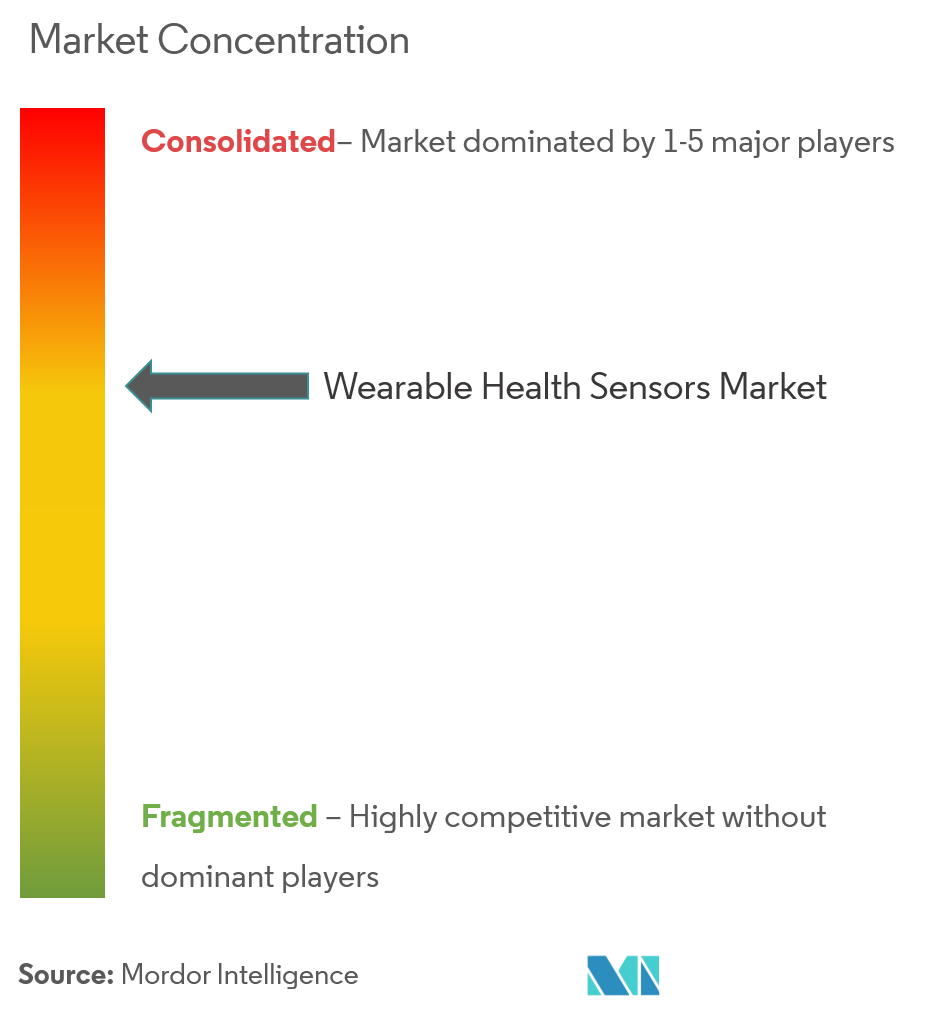Market Share of Wearable Health Sensors Industry
The wearable health sensors market is moderately competitive and consists of several major players. In terms of market share, few significant players currently dominate the market. It also has a lucrative growth rate, with key players investing in R&D to strengthen their product portfolios by launching novel products and technologically upgrading their existing products. Players' focus on manufacturing patent products is expected to fuel market competition.
In February 2022, Abbott Laboratories, a US-based medical device company, developed consumer bio wearables called Lingo that can track key body signals to help users better understand their overall health and take steps to improve it. It may allow biohackers to use a continuous stream of data rather than sporadic finger-prick tests, urine samples, and breath readings.
In December 2021, NextNav, a company specializing in next-generation GPS, teamed up with Bosch Sensortec. This company specializes in sensing solutions for consumer electronics, enabling more exact vertical placement in barometric pressure sensors. The NextNav Certified program will put Bosch Sensortec's barometric pressure sensors through rigorous testing to ensure that their accuracy and performance exceed strict standards across various application scenarios.
Wearable Health Sensors Market Leaders
TE Connectivity Ltd.
Analog Devices Inc.
TDK Corporation
Texas Instruments Incorporated
Maxim Integrated Products Inc.
*Disclaimer: Major Players sorted in no particular order

